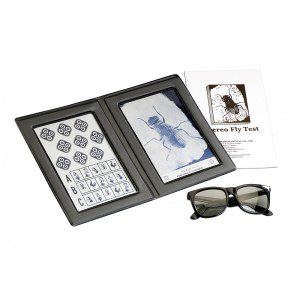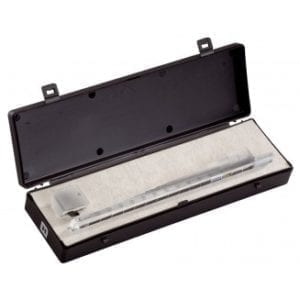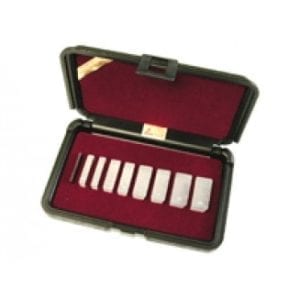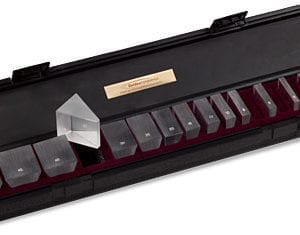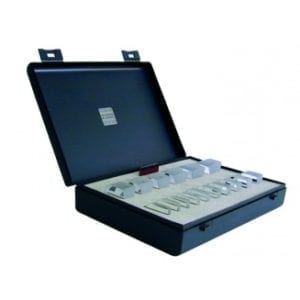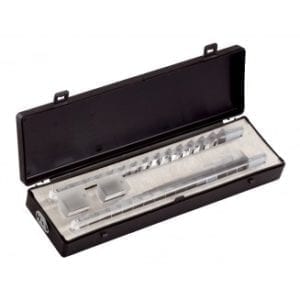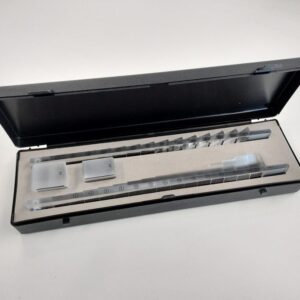Stereotest Fly (original)
€245,00 excl. VAT
This test presents three levels for testing young children. In each
line, one of the five animals appears forward from the others. It will help the children if you point to the animals in the line being tested an ask: “Does one of these animals seem to come out closer to you than others?”
The test will be delivered including glasses and an English manual.
This stereo fly test presents three levels for testing young children. In each line, one of the five animals appears forward from the others. It will help the children if you point to the animals in the line being tested an ask: “Does one of these animals seem to come out closer to you than others?”
The test will be delivered including glasses and an English manual.
Stereotest Fly
The Stereo Fly Test provides an easily administered check of stereoscopic depth perception at any age level. Its purpose is to measure how minutely the two eyes can discern differences in the distances of objects from the observer. Other depth determinants such as size, overlapping, perspective, etc. must be excluded to demonstrate the integrity of the fusion mechanism. Stereo Optical’s Vectogram® is an ideal medium for this test. Without introducing instruments or lenses or prisms, the images for the right eye and left eye may be superposed, and stereoscopic disparities introduced in graded steps.
Included tests fly stereo test
Three tests are presented here for use under different circumstances:
- The House Fly establishes the presence of gross stereopsis, especially useful for young children who may have difficulty understanding instructions.
- The Circle patterns provide a finely graded sequence for critical testing.
- The series of animals, from which a forward-appearing one is selected, facilitates the testing of younger children.
Instructions Fly stereotest
To administer, hold the picture straight before the patient to maintain the proper axis of polarization. Provide good light, but avoid reflections on the shiny surfaces. Although the graded tests are standardized for sixteen inches, minor variations in distance will have little effect on the score. Polarized viewers must always be worn–over glasses, if used. For the bifocal wearer, position the test properly for near-point viewing.
| Weight | 1 kg |
|---|

